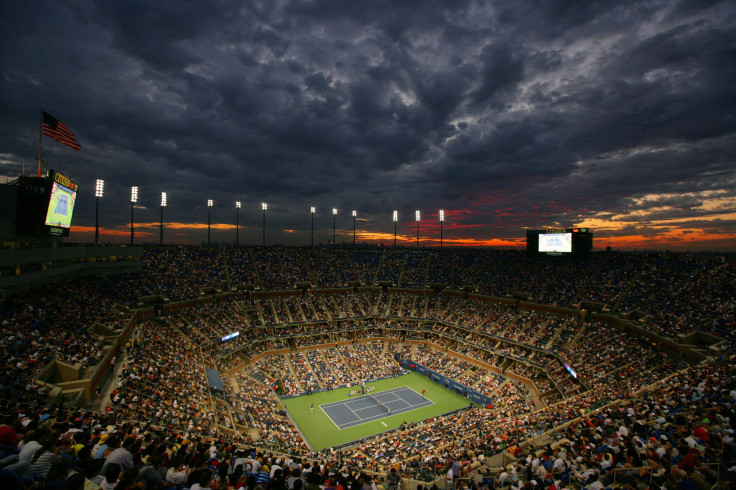US Open 2014: Financial Effect The Tennis Tournament Has On New York City

Every August the tennis world descends upon Flushing Meadows for the U.S. Open. While the sport’s biggest stars are the main attraction, the two-week tournament is also a financial boon for New York, as hundreds of millions of dollars are pumped into the greater metro area, rivaling such powerhouse draws as the NFL’s Super Bowl or even WWE’s (NYSE:WWE) signature event, Wrestlemania.
While tennis does not draw nearly as much media attention as the NFL, Major League Baseball, NBA, or NHL, tourists and New Yorkers flock to Queens to catch the world's best tennis players competing for a coveted major. The U.S. Open offers 224 matches and $40 million in prize money, but the big winner is New York, which could pull in more than $700 million.
The tournament holds several significant advantages over the NFL and the WWE, most notably its length and the fact it’s the only tennis major held in North America. Newsday reported that 45 percent of the nearly 700,000 regular attendees at Billie Jean King National Tennis Center live outside the greater New York area, and fans are not averse to the ever-inflating ticket prices. Over the last seven years, the average ticket price rose 29 percent, from $110 in 2007 to $142 this year.
The tournament is also great for part-time employment. Roughly 13,000 seasonal jobs are created in the New York metro area due to the U.S. Open, according to WalletHub. In a tight economy, every bump in salary helps, and that income can often go right back into the local economy.
But the estimated $700 million is the big figure, and it towers over the $500 million that this year's Super Bowl brought to the New York area when the NFL rather controversially chose MetLife Stadium in New Jersey over a warmer location or a domed stadium. There are also caveats to the $500 million figure. For one, numerous reports indicate that while the Super Bowl might have made a $500 million gross impact on New York-New Jersey businesses, when the money trickled down to local businesses the actual benefit it came out to $125 million at the most. Much of the gross goes to hotels, with those largely owned by chains not incorporated in New Jersey or New York.
As WWE’s signature event, Wrestlemania has proven to be a huge cash cow for the host city, but even combining its last six years of reported economic impact pales in comparison to the U.S. Open. Figures for the most recent Wrestlemania held in New Orleans aren’t available yet, but the previous six years generated a combined $400 million in cumulative economic impact, the Connecticut-based company said in a release last year. Wrestlemania 29 was also hosted at MetLife Stadium, and for the second straight year racked up $100 million in total economic impact.
The U.S. Open’s accessibility has also helped the tournament retain fans, something the NFL failed to do. Spectators were waiting for hours inside and outside packed regional train stations following the Seattle Seahawks blowout victory over the Denver Broncos. By contrast, the U.S. Open has one train line that can shuttle fans from midtown Manhattan to Flushing in roughly 40 minutes and for a total round-trip fee of $5.50. Though it was the first time the NFL and Super Bowl attendees had to navigate through a transportation system as intricate as the one connecting New York and New Jersey.
The timing of a tennis tournament also helps. The U.S. Open might be an added incentive for potential travelers looking for a summer trip or a Labor Day getaway to the Big Apple. Tourism has long played a massive role in New York’s economy, but the city has seen it grow exponentially for more than a decade. In 2013, the city drew more than 54 million visitors, who poured an estimated $58.7 billion into the economy, the Wall Street Journal reported. The jump also represented a 54-percent increase over 12 years under former Mayor Michael Bloomberg, and the city is on pace to set a mark of more than 55 million visitors in 2014.
Even with no certifiable American star on the men’s side like Pete Sampras and Andre Agassi were in the 1990s, the U.S. Open has also seen ticket sales rise. In 2013 the tournament received $98.5 million in tickets sales, up from $76.8 million in 2012, New York Business Journal reported. This year, top draw Rafael Nadal is absent from the tournament, yet attendance remains strong after the opening round.
© Copyright IBTimes 2024. All rights reserved.





















